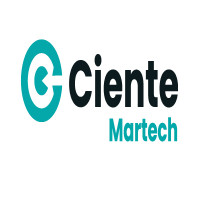Lead-generation-v-s-appointment-setting-whats-the-difference

Strong 8k brings an ultra-HD IPTV experience to your living room and your pocket.
With the increasing market saturation, brands are struggling to be unique. Buyers have become self-aware, and their demands continue to fluctuate. How can marketing and sales align themselves with the latest thunderstorms and ride the waves smoothly?
According to a report by Sean Shea, a former Forbes council member, only 21% of organizations understand appointment setting as a significant aspect of their B2B lead generation tactics.
Primarily, it’s crucial to underline that appointment setting and lead generation are not the same. While both strategies might capture leads, they affect the sales funnel differently. However, establishing an appointment setting as a step in lead generation strategies can actually work as a secret superhero in elevating a business’s growth potential.
However, this isn’t the actual case.
The two are interlinked. Ineffective lead-generation efforts might directly translate to a lack of qualified appointments or high-value meetings. This has a vital impact on the closing rate.
But lead generation is a broad term. There’s no guarantee that the efforts will convert into a sale or even an appointment. Whereas appointment setting has a much-streamlined priority to ensure a meeting is booked, an invite sent and accepted, and the lead attends it.
To ensure robust appointment setting, businesses should understand how lead generation can lend a helping hand.
The observable truth is B2B sales cycles are lengthy compared to B2C. The former requires ample attention, time, and dedication to achieve measurable results. Hence, organizations must examine the facets of the sales funnel where lead generation should be given priority. And its impact on appointment setting later down the funnel.
Brands should understand which marketing strategy works well during which scenarios and at which stages of the funnel.
To help straighten this out, one should establish the key differences between lead generation and appointment setting.
Appointment setting differs from lead generation. How?
One significant facet to note here is these strategies are not interchangeable.
Lead generation’s major focus is on TOFU, whereas appointment setting targets the MOFU and BOFU. To dive into the detailed nuances, let’s focus on spotlighting some of the main aspects of B2B lead generation.
The basics of B2B lead generation
An organization can capture the maximum number of leads through a robust lead gen strategy without setting an appointment. However, appointment setting cannot proceed without lead generation.
At the core, both depend on capturing leads – this is one of the commonalities.
However, lead generation techniques are significant in creating awareness concerning the business. Hence, a major portion of priority is attributed to the volume of leads qualified. Generating leads is significantly about building a robust sales pipeline for a business, i.e., attracting potential buyers.
Even in modern marketing, most businesses continue to cast a wider net as the primary focus of their lead gen strategies. From executing comprehensive social media content to content marketing efforts – it’s all about capturing leads for them. These leads range from ones just browsing the Internet to those who have high purchase intent.
The only aspect to ensure here is the leads fit the ICP, which is why qualification takes up significant space while capturing demand.
One of the integral components of lead generation is creating awareness and demand while also collecting and collating lead information. These are crucial for future outreach, i.e., appointment setting.
But how do brands propagate the visibility and capture demand?
Through a multichannel approach, i.e., diverse marketing channels for lead identification and capture. It’s an integral component here, unlike in an appointment setting. The mundane methods involve SEO, content marketing, paid advertising, email marketing, Google ads, etc.
In simple terms, lead gen uses an omnichannel approach because the initial phases of the funnel are focused on piquing the prospect’s interest in the brand. Some channels’ targeting is broader, while the others are more spearheaded.
While appointment setting depends on generating leads, it’s more inclined toward sales.
So, is appointment setting a part of lead gen?
The goals at the beginning of each strategy might be different, but the end objective is the same – increasing sales for the business.
Lead generation is a long and complex process. It’s not straightforward, and it doesn’t entail a playbook. Meanwhile, setting appointments seems easy, one that converts to sales seamlessly, right?
It’s not quite right. Setting meetings is not a simple process. Like lead generation, appointment setting involves bringing in new prospects, blocking the calendar for a meeting, and closing this interaction with a potential sale. Practically, it ensures that the prospects progress down and end up as buyers.
Note: IndiBlogHub features both user-submitted and editorial content. We do not verify third-party contributions. Read our Disclaimer and Privacy Policyfor details.


